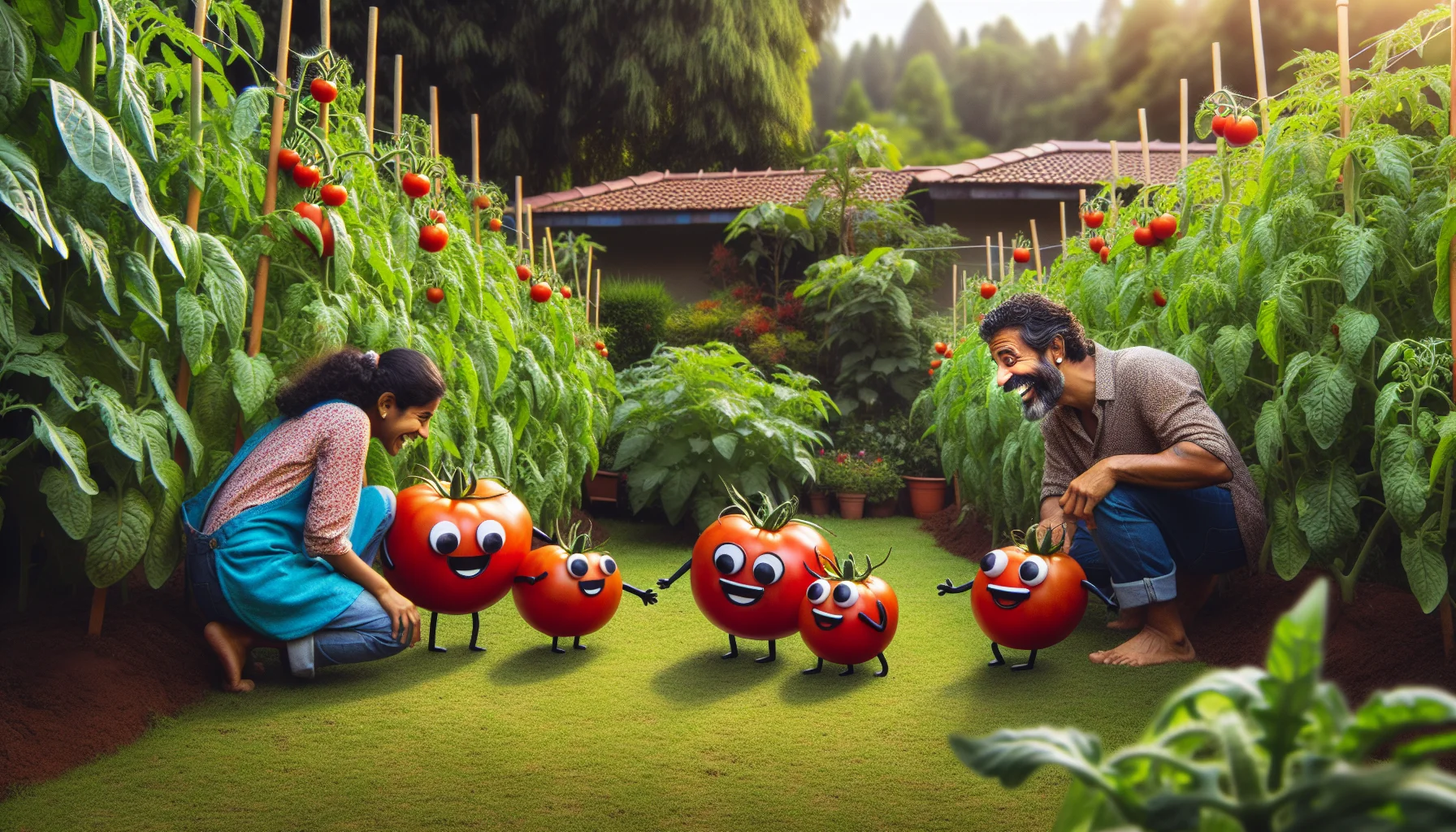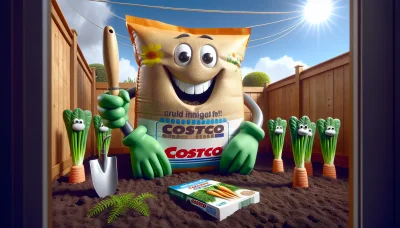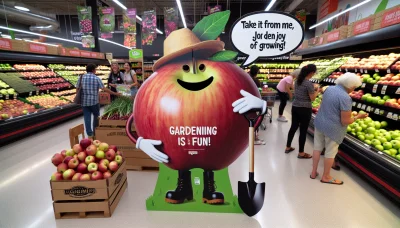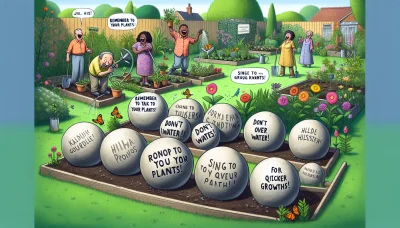Home grown tomatoes Quiz
Test Your Knowledge
Question of
The Joy of Growing Home Grown Tomatoes
Growing tomatoes at home offers a myriad of benefits that extend beyond the simple pleasure of gardening. Firstly, home-grown tomatoes are known for their superior taste and nutritional value, as they can be picked at the peak of ripeness unlike their store-bought counterparts which are often picked early to endure the transportation process. This not only ensures a fresher, more flavorful tomato but also one that is packed with more vitamins and minerals. Additionally, growing your own tomatoes allows you to control the growing conditions, meaning you can avoid the use of harmful pesticides and fertilizers, leading to a healthier and more eco-friendly option. On a personal level, the act of nurturing a plant from seed to fruit can be incredibly rewarding, offering a sense of accomplishment and a deeper connection to the food you consume. Furthermore, gardening, in general, is known to reduce stress and promote mental well-being, making the joy of growing home-grown tomatoes about so much more than just the delicious fruits of your labor.
Choosing the Right Tomato Varieties for Your Garden
Tomatoes are a staple in many gardens, but with hundreds of varieties to choose from, selecting the right ones for your garden can be a daunting task. Tomatoes can be broadly classified into two main categories: determinate and indeterminate. Determinate tomatoes, also known as bush tomatoes, grow to a certain height and produce all their fruit at once, making them ideal for container gardening or small spaces. Indeterminate tomatoes, on the other hand, continue to grow and produce fruit throughout the growing season, requiring more space and support but providing a steady supply of tomatoes.
When selecting tomato varieties, consider your climate and the length of your growing season. Cool climates may benefit from early-maturing varieties, while warmer areas can grow tomatoes that take longer to mature. Heirloom tomatoes offer unique flavors and colors, but may be more susceptible to diseases than hybrid varieties, which are bred for disease resistance and uniformity. Cherry or grape tomatoes are great for snacking and salads, while larger beefsteak varieties are ideal for slicing.
Ultimately, the best tomato variety for your garden depends on your personal taste, space, and climate. Experimenting with different varieties each year can be a fun and rewarding way to discover new favorites and ensure a bountiful harvest.
Essential Steps for Planting Tomatoes
- Choose the Right Variety: Select a tomato variety that suits your climate and space.
- Prepare the Soil: Ensure the soil is rich in organic matter and well-draining. Adjust the pH to between 6.0 and 6.8.
- Start Seeds Indoors: Begin 6-8 weeks before the last expected frost. Use seed starting mix and keep soil moist.
- Harden Off Seedlings: Gradually expose seedlings to outdoor conditions over a week to acclimate them.
- Choose the Right Time: Plant outdoors after the last frost when soil temperatures reach at least 60°F (16°C).
- Planting Depth: Plant seedlings deep, burying up to two-thirds of the stem to encourage strong root growth.
- Spacing: Space plants 18 to 24 inches apart in rows that are 3 to 4 feet apart to ensure adequate airflow and sunlight.
- Support Plants: Use stakes, cages, or trellises to support plants and keep fruit off the ground.
- Watering: Provide 1-2 inches of water per week, watering at the base to avoid wetting the leaves.
- Mulching: Apply a 2-3 inch layer of organic mulch around plants to retain moisture, regulate soil temperature, and reduce weed growth.
- Fertilizing: Use a balanced fertilizer after planting and side-dress with a low-nitrogen fertilizer when fruits begin to form.
- Monitor for Pests and Diseases: Regularly check for signs of pests and diseases, and take action as needed.
Caring for Your Tomato Plants
To ensure your tomato plants thrive, consistent care is crucial. Watering should be done deeply and regularly, aiming for at least 1 inch of water per week, but adjust based on weather conditions. Avoid overhead watering to minimize disease risk. Fertilizing your plants every two to four weeks with a balanced fertilizer helps promote healthy growth. Pruning is also essential; remove suckers and lower leaves to improve air circulation and direct the plant's energy towards fruit production. With these practices, you'll enjoy a bountiful tomato harvest.
Pest and Disease Management for Healthy Tomatoes
Tomato plants can be susceptible to a variety of pests and diseases, which can hinder their growth and reduce crop yield. Common pests include aphids, whiteflies, and tomato hornworms, while diseases like blight, powdery mildew, and blossom end rot can also pose significant threats. To manage these issues organically, gardeners can employ several strategies. Introducing beneficial insects such as ladybugs can help control aphid populations. Neem oil and insecticidal soaps are effective against whiteflies and hornworms when applied directly. For fungal diseases, ensuring proper air circulation around plants and using copper-based fungicidal sprays can prevent outbreaks. Additionally, maintaining healthy soil with good drainage and balanced nutrients can help prevent blossom end rot. By adopting these organic practices, gardeners can protect their tomato plants from common pests and diseases, promoting a healthier, more productive garden.
Harvesting and Storing Your Tomatoes
Knowing the right time to harvest your tomatoes can significantly impact their taste and longevity. Ideally, tomatoes should be picked when they are firm and fully colored. This ensures they have reached their peak flavor. It's important to harvest tomatoes before the first frost to avoid damage. Once harvested, storing your tomatoes properly is key to maximizing their freshness and flavor. Avoid refrigerating fresh tomatoes as it can cause them to lose their flavor and become mushy. Instead, store them at room temperature on a countertop out of direct sunlight. If you have unripe tomatoes, placing them in a paper bag with a banana or apple can speed up the ripening process. By following these simple tips, you can enjoy the delicious taste of your home-grown tomatoes for as long as possible.
Delicious Recipes Using Home Grown Tomatoes
- Classic Tomato Salad: Slice fresh tomatoes and mozzarella, then layer with basil leaves. Drizzle with balsamic glaze and olive oil for a refreshing salad. The sweetness of home-grown tomatoes makes this simple dish burst with flavor.
- Homemade Tomato Sauce: Use your tomatoes to make a rich, savory sauce. Simply cook down the tomatoes with garlic, onion, and your favorite herbs. The depth of taste from garden-fresh tomatoes is unmatched, creating a sauce that's perfect for pasta or pizza.
- Roasted Tomatoes: Halve your tomatoes and roast them with a touch of salt, pepper, and olive oil. Roasting intensifies the flavor, making it a perfect side dish or a topping for bruschetta. The natural sugars caramelize, highlighting the robust taste of fresh tomatoes.
- Tomato and Cucumber Gazpacho: Blend fresh tomatoes with cucumber, bell peppers, and onions for a cold soup that's ideal for hot summer days. Using home-grown tomatoes adds a vibrant color and taste that elevates the dish.
- Caprese Skewers: Skewer cherry tomatoes, mozzarella balls, and basil leaves, then drizzle with a balsamic reduction. This bite-sized version of the classic caprese showcases the juicy, flavorful tomatoes from your garden.
- Tomato Jam: Simmer down your tomatoes with sugar and lemon juice to create a sweet and savory jam. It's a delightful spread on toast or as a condiment for meats. The freshness of your tomatoes will shine through, giving the jam a rich, complex flavor.












